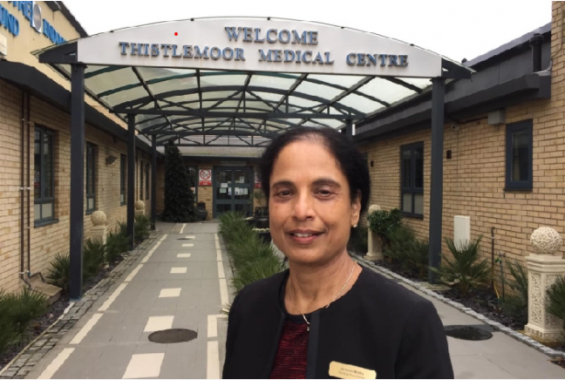Many long-serving GPs will have stories of the difference they’ve made to people’s lives. Mine began 40 years ago, when I came to Peterborough as an East African doctor of Indian heritage with my husband, a refugee from Uganda; our 21-day-old child; and little financial and social support.
Although Vocational Training Schemes had been introduced, I needed to design my own by arranging placements, and like many of my generation from my background, had to apply for several hundred jobs to get an interview.
I trained to become the only female police surgeon in Cambridgeshire, dealing with majority of child protection cases and rape cases. This caused conflict in the practice I worked in, as I was often called away to courts to testify as an expert witness. So, I started my own practice, Thistlemoor Medical Centre, with 700 patients.
While visiting my family of doctors in America, my husband and I saw various healthcare professionals delivering care. This inspired us to introduce healthcare assistants, and by 2004 the practice had become a pilot site for Working in Partnership (WiPP) projects, further developing the roles of HCAs and nurses.
Our ‘Thistlemoor Model’ was discussed in a World Health Organisation conference
Through WiPP, this model, called the Thistlemoor Model, was assessed by the University of Sheffield, who found us to be a learning organisation delivering safe, effective care. It was also discussed at a World Health Organisation conference in Moscow, where a delegation from Finland heard about us. They were in the process of redesigning their primary care, so ultimately sent groups of 25 GPs here for three years as they adopted our model.
Now, we care for over 27,000 patients from hugely-developed premises that my husband helped to design. It’s over 3,000 square metres, with 60 clinical rooms, endoscopy facilities, a pharmacist and the hub for local district nurses and health visitors, where patients have open access and every acute care visit is combined with health promotion, checks for long term care, and any other services they need as a ‘one stop service’.
Throughout my career, I’m most proud of workforce development, having recognised long ago that Peterborough lacked enough GPs, but also that GPs didn’t need to do everything they did traditionally.
My practice population is from a deprived background, with 80% unable to speak English. However, our 85 staff members collectively speak several languages, while the HCAs and nurses being from the same ethnic groups as many patients also helps massively with communication.
For instance, HCAs might scribe for the doctor, act as a chaperone, or translate the management plan into the patients’ language, improving clinical outcomes for cohorts that previously found access to traditional healthcare difficult.
My recognition is a significant tribute to those who’ve supported me over the years. My husband and son work alongside me as GPs in the practice, for instance, with multiskilled colleagues sharing our vision for delivering healthcare.
I feel that this deprived area of Peterborough is where we can make a real difference, and doing so at Thistlemoor Medical Centre continues to be a pleasure.
Dr Nalini Modha is a GP partner and trainer in Peterborough
Pulse October survey
Take our July 2025 survey to potentially win £1.000 worth of tokens













